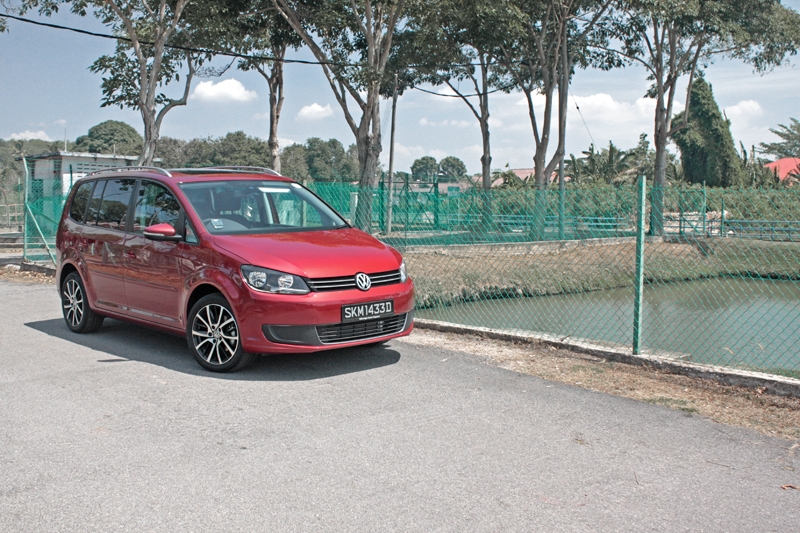One of Singapore’s best-selling MPV gets the diesel treatment, but is it VW's vain effort to fill up as much segment or is it really beneficial for Singaporean drivers?
Photos: Azfar Hashim
Mention the word ‘diesel’ to a family man and he would immediately have taxis popping up in his head. And you cannot really blame him as - unfortunately in Singapore’s context especially - diesel-powered models are remotely available only for taxi companies looking for efficient cars that can make up the number to their fleet.

But as of late however, more brands are offering oil-burners as alternative. The most interesting proposition? Significantly lower fuel consumption, translating to lower running costs. After all as a family man, every cent counts.

Now meet the Volkswagen Touran TDI, Singapore’s best-selling MPV sans the 1.4-litre force-fed engine. And yes, this is a diesel.

At the heart of the Touran TDI is a Euro V 4-cylinder, 16-valve 1.6-litre turbodiesel engine. Mated to a 7-speed DSG ‘box, it is able to produce 105 bhp. But that’s not the better part though, this is: 250 Nm of torque that is good enough at leaving behind other 1.6-litre petrol sedans (Cruze: 155Nm, Focus: 159 Nm, Sylphy: 154 Nm, Civic: 151 Nm, Preve CFE: 205 Nm, Forte K3: 157 Nm, Elantra: 157 Nm, Fluence: 156 Nm, Altis: 154 Nm) behind at traffic light grand prix. That’s quite something there…

Other on-paper digits include the 0-100 km/h timing of 12.8 seconds (slow, we know), and a combined cycle of 21.7 km/L (amazing isn’t it?).

To be honest however, the Touran TDI feels faster than that and the more realistic fuel consumption yours truly achieved hover around 16 to 18 km/L.

While idling, the Touran TDI’s diesel clatter is obvious when you are standing outside the car. But it is a different story when you get inside; engine sound is kept at a minimal and so is the vibration. Obviously, Volkswagen went the extra length to keep the NVH (Noise, Vibration, Harshness) level on the positive side of things. And this continues on as you drive, making this MPV adequately comfortable along extended long drives along the expressway.

Things only get slightly noisier when you start to drive much faster (the car was driven up to Melaka for this review) along the North-South highway. Push it near and beyond 4,000 rpm and you get the engine urging you to take things easier. The DSG here responds attentively during upshifts; but in order to extract the most power to enjoy overtaking, shifting it manually via the “+/-“ mode is still the order (pun intended) of the day.

In terms of handling, the Touran TDI remains your typical Volkswagen: good body control, properly weighted steering wheel (even at high speeds) and capable anchors. In fact, it was caught behaving like a hatchback while driven along the B-roads, giving even bigger sedans a hard time.

Interior wise, there is no difference between the TDI and its petrol brethren; we’re talking about quality and practicality here by the way. Highlights would have to be the standard sunroof and VW’s RNS 510 multimedia head-unit. Let’s not forget BlueMotion that includes an automatic engine start/stop function too.

Unfortunately you do not get steering mounted paddle shifters here. Front foglamps, HID and LED daytime running light are also missing, all taken off the list to keep price - what else? - competitive. That aside, at least VW was generous enough to fit 17-inch alloys wrapped in 225/45 R-17 Pirelli P7 Cinturato rubbers at no extra cost.

At the end of the day, the Touran TDI is simply an honest MPV that provides you with the usability of a typical 7-seater with German engineering; and most importantly, a fuel-sipping advantage over the other long list of petrol MPVs. The surprisingly capable handling and good level of NVH makes it somewhat desirable.

Imminent threats however, come in the form of Citroen’s new stylish C4 Grand Picasso e-HDi and Renault’s less bus-like Grand Scenic dCi…



